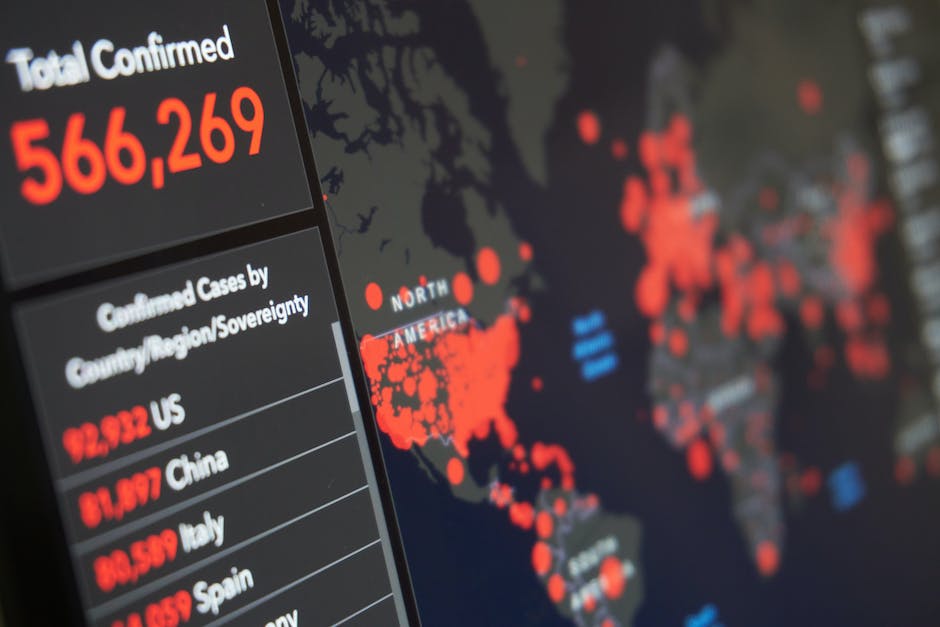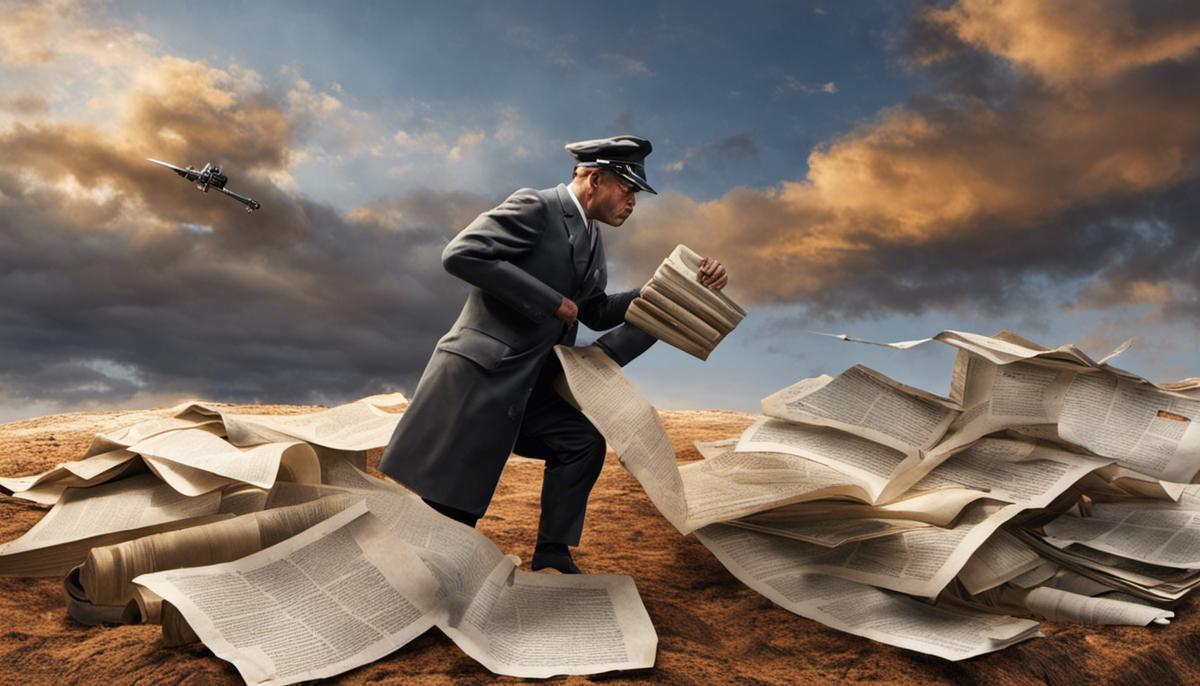Our society is undeniably immersed in an era of mass information, where the democratization of knowledge frequently butts heads with the proliferation of misinformation. As the epidemic of fake news and manipulated narratives widens its sinister reach, the critical need for fact-checking becomes more apparent than ever. This commentary seeks to dissect this intricate landscape by first unraveling the machinations of misinformation in news reporting, outlining its origins, distribution methods, and impact on the public. We then shift our lens towards fact-checking in journalism, underscoring its indispensability in preserving the integrity of news. The remarkable interplay between these two forces under the high-stakes arena of digital news is also canvassed. Furthermore, we shed light on the strategies devised to thwart misinformation, evaluating the role of various stakeholders and the effectiveness of their interventions. Lastly, we invite you to gaze into the potential future of news reporting amidst the ceaseless dance between fact-checking and misinformation, and ponder how it might shape our society.
Table of Contents
Understanding the Concept of Misinformation
Misinformation in news reporting is a significant issue that affects our society’s understanding and interpretation of events, risks, and various other topics. The roots of this problem are multifarious and complex, intertwining with the characteristics that amplify its potency.
To begin with, the mechanisms underpinning misinformation often stem from cognitive biases—errors in our thinking that lose objectivity and cloud judgments. Confirmation bias, for instance, compels individuals to seek and interpret information that aligns with their pre-existing beliefs or hypotheses. This bias is particularly prevalent in the context of news consumption and can significantly contribute to the spread and perpetuation of misinformation.
Another critical precursor of misinformation is the rapid evolution and impact of social media platforms. These digital arenas enable the swift and vast spread of information, engendering the so-called ‘post-truth’ era. Here, emotionally appealing narratives often outpace fact-based reporting. The ‘echo-chamber’ effect, where information reverberates within a group of like-minded individuals, further fuels misinformation. Consequently, nuanced, complex issues may be oversimplified into digestible, yet misleading narratives.
The characteristics of misinformation in news reporting are similarly multifaceted. Typically, such information tends to play into existing fears or prejudices, making it emotionally absorbing and easier to disseminate. Misinformation also possesses a ‘stickiness’, meaning it often lingers in recipients’ minds even after being debunked. This perseverance links to another fundamental feature of misinformation: it is notably difficult to correct. Research shows that debunking efforts can sometimes lead to a ‘backfire effect’, where corrections inadvertently reinforce the false belief.
Furthermore, misinformation now can be packaged with sophisticated tools, like manipulated imagery and deepfake videos, that enhance its credibility and persuasive power, making the task of discerning falsehoods even more challenging.
In conclusion, the roots and characteristics of misinformation in news reporting are diverse and intricate, entwined with the human cognitive framework and the accelerated information dissemination methods of the digital age. Nevertheless, the outcomes resonate through our individual and collective understanding, skewing perceptions and potentially stimulating misplaced decisions. Thus, addressing the misinformation crisis is imperative for the health of public discourse, demanding a multi-pronged approach encompassing education, policy shifts, and technological tools to promote media literacy and critical thinking.

Fact-checking in Journalism
Heading into the depths of our current information-dense era, fact-checking emerges as an indispensable tool in maintaining accuracy in news reporting. It fortifies the reliability of media outlets, enhances public trust, and counters the spread of falsified narratives, solidifying its place in journalism, much like an intricately structured DNA strand in a living organism.
Fact-checking, at its core, is an investigative process which involves the in-depth verification of facts and figures rendered in news pieces to ensure objectivity and eliminate potential errors. A fact-checker acts with a discerning and objective eye – like a meticulous laboratory scientist examining a new specimen under a microscope – to unearth distortions, verify claims, and authenticate the accuracy of reports.
Just as the biological scientists’ quest for understanding requires sometimes ceaseless iterations of experimentation to yield credible results, so too does the process of fact-checking. The relentless pursuit for truth in journalism necessitates robust tools, sources, and databases, all harmonizing for the creation of a rigorous fact-checking system. Professional fact-checkers might employ search engines, scrutinize primary sources, and review academic studies and official databases. They glean relevant data and corroborate their findings with experts, thereby substantiating the narrative with irrefutable evidence.
Perhaps the most emblematic role of fact-checking comes to the fore in mitigating the spread of fake news and disinformation. Fact-checking, in this regard, can be perceived as immutable laws of physical science, grounding the airy chains of misinformation that hover over modern news consumers. Fact-checkers debunk hoaxes, expose propaganda, and dismantle misinterpretations of data that proliferate in today’s media. Moreover, they aid news consumers in distinguishing evidence-backed journalism from poorly substantiated news and outright fabrications.
Yet, it’s worth mentioning that fact-checking is not an omniscient panacea for the dissemination of false narratives in news reporting. It faces numerous hurdles, including time pressure, lack of access to primary sources, and sometimes, the sheer volume of information needing verification. Hence, refining and revising the mechanisms of fact-checking is a perpetual endeavor, mirroring the unending evolutionary improvements in the sector of biological science.
Coupled with this, fact-checking functions to heighten accountability in news organizations. Much as scientific peer review maintains high-quality research by keeping academics accountable for their findings, fact-checking imposes a similar mechanism in journalism. It rebounds the quality of journalism, fostering trustworthiness, and safeguarding the democratic role of the press.
Fact-checking fosters a rigor that is reminiscent of the scientific method in the field of journalism, with the pursuit to corroborate truth and validate information. Much like an academic who is committed to disseminating credible knowledge, the aim is here to redistribute precise, reliable information to the masses. This role has become ever more prominent amid growing complexities of our digital age and serves as a beacon in our quest for truth in journalism.

Dynamics of Misinformation and Fact-checking
In light of the exponential spread of misinformation in the modern realm, examining the evolving relationship between this complex issue and the essential tool of fact-checking becomes prime. Building on the previously discussed constructs of cognitive biases, the role of social media, the ‘post-truth’ era, and the intricacies of misinformation itself; let us now delve into the potent counter-strategy of fact-checking and its intertwinement with these multifaceted elements.
Fact-checking is an integral pyramidion in the realm of news reportage. It serves as the keystone that reinforces journalistic credibility and integrity. This moderating process, although often not given the limelight it well deserves, performs the essential job of verifying public statements, news stories, and other forms of content that are open to a wide audience. As misinformation today leverages technology in misleading the public, fact-checking too has had to rely on technological tools to unravel the snarl of untruths.
Let us consider the procedures used by professional fact-checkers. It is a systematic process, not unlike the scientific method: initiating from a hypothesis (or claim), observing the details, researching, experimenting, and finally arriving to a conclusion that either validates or challenges the initial hypothesis. Historical databases, statistical facts, expert opinions, and many other resources are utilized towards detecting errors, omission of significant context or outright falsehoods.
However, fact-checking is not an ironclad method; it possesses its own cavities. Constrained by the temporal nature of news, fact-checking needs to be swift, yet comprehensive. Also, given the vast array of information accessible in the digital age, fact-checking can become a daunting task. Furthermore, fact-checkers can fall into their own cognitive trappings — biases in interpreting the evidence, and a susceptibility to the very influence of emotional narratives and ‘sticky’ misinformation they are striving to combat.
As an approach to verify news’ veracity, fact-checking plays an indispensable role in combating fake news and disinformation, thus restoring a measure of order in the labyrinth of the information era. In a world where misinformation often seems to be a hydra-headed monster, fact-checking serves as a torch illuminating the darkness of disinformation.
Accountability in news organization finds its lodestar in fact-checking. Fact-checkers underpin public discourse and decision-making by ensuring every assertion meets the criterion of truthfulness, thereby thwarting the tentacles of misinformation from spreading unchecked. This brings a level of responsibility and credibility to news outlets and imposes a moral obligation to uphold their key role in society – disseminating accurate and useful information.
In the digital neoteric, misinformation and fact-checking are locked in a constant battle: as the former adapts and advances, so too must the latter. The increasing significance of fact-checking in this digital age thus redefines the time-honored adage; the pen is indeed mightier than the sword – in our case, the digital pen that reins the unfathomable beast of misinformation with the tether of fact-checking. It is a testament to the resilience of truth in the age of post-truth, and the indispensable weapon in safeguarding the bulwark of our future discourse and decisions. The path forward, undoubtedly, is challenging. The beacon of fact-checking, however, undeterred, shines, guiding us toward an enlightened horizon.

Strategies to Mitigate Misinformation
While robust methods to counter misinformation have been explored, challenges persist. One of the strategies gaining substantial traction in recent times is the deployment of expert networks and collaborations. The sheer speed at which misinformation spreads calls for orchestrated, swift, and broad-based responses. Aligning with top-tier academic institutions, research scientists, and subject matter experts can significantly bolster real-time fact-checking. These networks could provide valuable insights to contextualize data, exemplifying the high utility and necessity of both interdisciplinary and interorganizational collaboration in combating misinformation.
Moreover, the quality of journalism offers an invaluable foundation for mitigating misinformation. Indeed, a radical devotion to reporting accuracy and journalistic integrity could contribute to a significant reduction in the propagation of misinformation. This involves a meticulous approach to the source verification process to ensure the credibility of information. Thus, journalists play an integral role as they serve as conduits of information, being keenly aware of their immense responsibility and the potential implications of propagating unsubstantiated reports.
However, the public too bears a moral responsibility to engage judiciously with news content. Emphasizing accuracy over speed could be safe practice to curb the furtherance of misinformation. Encouraging users to take a moment to verify information before sharing can be instrumental in preventing the propagation of misinformation and preserving the integrity of the news landscape.
Furthermore, technological solutions can significantly contribute to tackling the misinformation conundrum. AI-based fact-checking tools, more advanced than existing models, could offer a robust bulwark against misinformation. With machine learning algorithms being trained on vast corpora of factual data and implemented with human oversight, these technologies could potentially identify and flag questionable content swiftly and accurately.
Crucially, the legal dimension cannot be overlooked. Robust legislative measures and regulations concerning the dissemination of news could effectually disincentivize the propagation of misleading information. Criminalizing the deliberate dissemination of harmful misinformation without thwarting freedom of speech might involve a careful balancing act but is an essential element towards a consistent, effective response to the misinformation epidemic.
Finally, a global approach is imperative. Misinformation and fake news do not recognize borders, necessitating an international collaborative response. International conventions could serve as instruments to harmonize efforts and enforce global standards in news reporting. Such cohesive efforts could be invaluable in fostering globally consistent practices to tackle misinformation, ensuring the resilient triumph of truth in the international information arena.

Future of News Reporting
As we delineate the struggle between the titan forces of fact-checking and misinformation, and seek to understand its implications on the future of news reporting, it remains critical to spotlight the potential solutions. Apart from the sphere of individual responsibility, there is an intensifying call for collective approaches in mitigating the challenges of misinformation and reaffirming fact-checking as a non-negotiable standard of journalistic practice.
In the vanguard, the deployment of expert networks and collaborations deserves consideration. Harnessing the cumulative wisdom of academics, scholars, and subject matter experts could be a significant countermeasure against the spread of misinformation. These experts, drawing from their respective fields of knowledge, can act as validators, adding a deeper layer of scrutiny to the wealth of information circulating in the public sphere.
Moreover, the call is clear for journalistic integrity to take precedence in the battle against misinformation. Journalistic ethics, the sacrosanct principles that guide the profession, mandate responsibility in reporting and emphasize the importance of accuracy and impartiality. This standard serves as a bulwark against the infiltration of unauthorized or distorted information in the news circuit, thereby acting as a considerable counterforce against misinformation.
Importantly, the public must grasp its role in this struggle. As consumers and distributors of news, individuals must engage judiciously with content. This involves critical analysis of news sources, attentive reading beyond headlines, and the wary dismissal of sensational claims unless backed by credible evidence.
Prudently, one must also consider technological solutions in this battle. Artificial intelligence-based fact-checking tools, for instance, may be leveraged to scan an enormity of content for potential inaccuracies, contributing to improved efficiency and rigor in fact-checking processes. While technology gives credence to misinformation through deepfakes and other advanced manipulations, symmetrically, it crafts solutions to address the same.
Yet, paramount remains the need for robust legal measures and regulations. Legislators and policymakers must craft responsive laws that deter the generation and dissemination of misinformation. Strategic policy shifts might include stiffer penalties or increased transparency requirements for media platforms facilitating the spread of inaccuracies.
Ultimately, any approach to countering misinformation and bolstering fact-checking cannot remain geographically confined. Misinformation is not a localized phenomenon; it infiltrates global networks, transcending geographical borders with ease. Therefore, a globally concerted effort, bringing together nations in a mutual goal, would be an essential element in a more comprehensive solution.
In summary, the struggle between fact-checking and misinformation in the landscape of news reporting accounts for a captivating narrative, laden with both challenges and prospects. It evokes a response not just from news organizations, journalists, or policy-makers alone, but from each stakeholder in the information ecosystem in a shared commitment to truth. The resilience of truth, as it has stood the test of time, forms the backbone of veritable public discourse and decision-making, a necessity for the informed societies of the future.

As we navigate the unceasing waves of our information era, we cannot overstate the importance of a reliable and veracious news reporting system. The responsibility of sufficing the public’s right to truth, while warding off the contagion of misinformation, has elevated fact-checking from being a journalistic routine to a democratic necessity. Deliberate, calculated strategies and collaborative efforts across sectors are vital to subdue the spread of misinformation, while concurrently amplifying the role and reach of fact-checking. Like a resilient beacon cutting through opaque fog, these efforts will ultimately guide us towards a future of news reporting that is marked by enhanced credibility, authenticity, and trust. As an informed citizenry, we must accept the reality of this ever-evolving challenge, and become active participants in shaping an information landscape steeped in truth and clarity.

Matt Smith is a seasoned journalist and author whose expertise spans across the dynamic realms of Politics, Gadgets, Gaming, and a plethora of general interest topics. With a Master’s in Political science and tech pedigree shaped in Silicon Valley, Matt brings a wealth of knowledge and a critical eye to everything he writes.
Politics: Matt offers sharp political commentary, drawing from his experience as a political analyst and his academic rigor.
Gadgets: His tech insights are grounded in real-world experience, having been on the front lines of innovation with a degree from Caltech.
Gaming: A respected voice in gaming, Matt’s reviews and trend analyses are a testament to his deep involvement in the gaming community.
General Topics: From science to culture, Matt’s writing spans a broad spectrum, engaging readers with a blend of expertise and relatable prose.
Engage with Matt’s compelling content for a fresh perspective on the issues at the forefront of today’s discourse.

